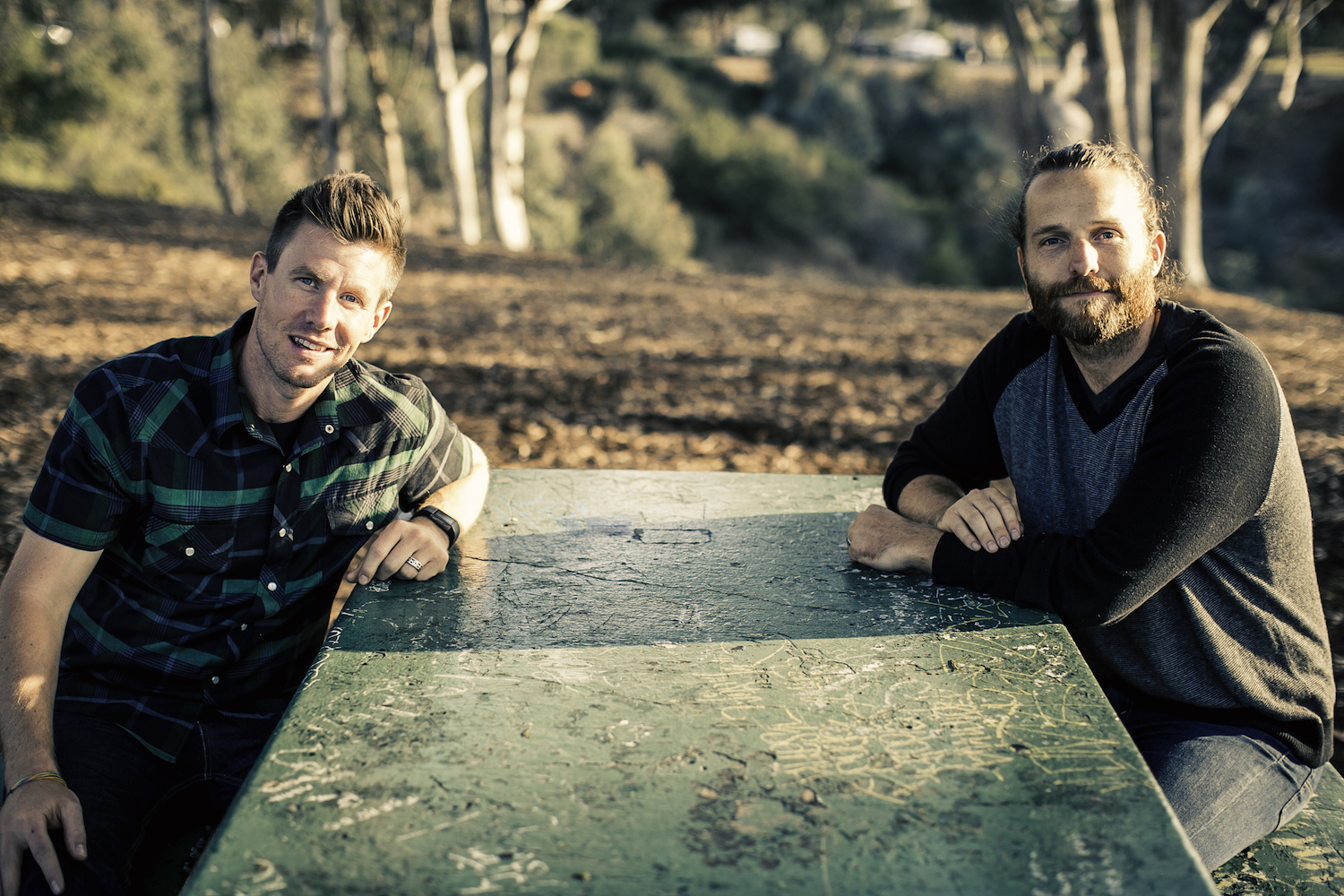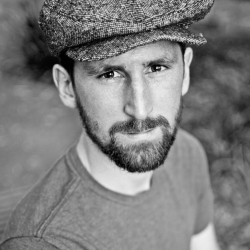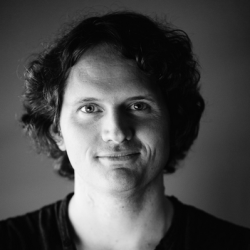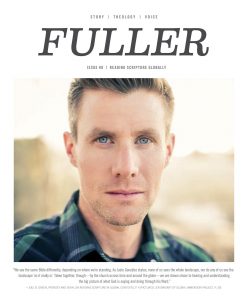 Before their first child was born—as a kind of final hurrah—Jon and Jan Huckins signed up for a trip that would change their lives forever. It was 2010, and the couple had just made a courageous decision: that Jon, after ten years in pastoral ministry, should attend seminary. Feeling the need for more training and a stronger intellectual foundation, he had enrolled in Fuller’s MA in Theology program. Now with a baby on the way, they decided to take a trip to Israel through Jerusalem University College before being homebound by school and parenthood.
Before their first child was born—as a kind of final hurrah—Jon and Jan Huckins signed up for a trip that would change their lives forever. It was 2010, and the couple had just made a courageous decision: that Jon, after ten years in pastoral ministry, should attend seminary. Feeling the need for more training and a stronger intellectual foundation, he had enrolled in Fuller’s MA in Theology program. Now with a baby on the way, they decided to take a trip to Israel through Jerusalem University College before being homebound by school and parenthood.
 Their time in the Holy Land became much more than a “final hurrah” for Jon (pictured) and Jan when they befriended their hotel server. Milad and his wife were expecting their first baby at the same time the Huckins expected theirs. Jon and Milad ended up hanging out on the hotel rooftop one night, talking World Cup soccer and impending parenthood while overlooking Herod’s Palace in the Old City of Jerusalem. In the middle of their joking and conversing, Milad grew somber. He looked at Jon and asked, “Why do your people think I am a terrorist?”
Their time in the Holy Land became much more than a “final hurrah” for Jon (pictured) and Jan when they befriended their hotel server. Milad and his wife were expecting their first baby at the same time the Huckins expected theirs. Jon and Milad ended up hanging out on the hotel rooftop one night, talking World Cup soccer and impending parenthood while overlooking Herod’s Palace in the Old City of Jerusalem. In the middle of their joking and conversing, Milad grew somber. He looked at Jon and asked, “Why do your people think I am a terrorist?”
Jon, stunned, had no response.
“How can you thank God for your breakfast every morning and hop on a tour bus to holy sites while, five minutes away, your brothers and sisters in Christ are experiencing daily occupation and oppression?”
Milad was an Arab Palestinian Christian, his family displaced by Israeli military advances in 1948 when thousands of Palestinians fled in terror. He now lived in Bethany—the place of Lazarus’s resurrection in John 11—in the West Bank, where tensions between Israelis and Palestinians often erupted with thrown rocks and flying bullets. At Milad’s invitation, Jon and Jan began visiting Milad and his community. After their Holy Land tour came to a close each day, the two Americans would get on a public bus and pass through military checkpoints into the West Bank.
What they saw shattered their perceptions about Israel and Palestine, politics and theology, theology and ethics. Jon realized that he had always understood Israel-Palestine relations through the lens of a subtle yet embedded Christian Zionism—and now, everything was turned upside down. His mind started spinning with new questions about God and discipleship: “Does peace fit into theology? How has my inherited theology been an obstacle to peace rather than a mandate to pursue it? What does a theology of peace look like? How is that practically lived out such that both Milad in the West Bank and my neighbors in San Diego flourish?”
Milad and his community busted open a door in Jon’s mind, and he stepped through to find out what it means to follow Jesus in the midst of very real and physical conflict.
. . . . . . . . . . . .
In 2005, when a 7.6-magnitude earthquake shattered the region of Azad Kashmir at the base of the Himalayas, the damage in that rural area of northern Pakistan was catastrophic. Emergency response teams were disabled. Almost 90,000 people died and nearly 4 million were displaced. Much of the farming region’s livestock were killed.
 In the aftermath of that disaster Jer Swigart (pictured), a young man who had come to take part in the relief effort, was struck by a realization. Working alongside others to clear rubble, distribute aid, and assist with communications between the villages and United Nations representatives, he discovered a God whose presence preceded him everywhere he went—even into areas he had previously considered “enemy territory.” For him it was an epiphany: God and God’s kingdom were much bigger than he had ever thought or imagined. Rather than bringing God to others in any way, it became clear to him that he was joining a very present, compassionate God in merciful action among those in need. While the infrastructure of Pakistani villages was being rebuilt, Jer found himself—and his perceptions of God—being undone and reshaped by a simultaneously global and personal deity.
In the aftermath of that disaster Jer Swigart (pictured), a young man who had come to take part in the relief effort, was struck by a realization. Working alongside others to clear rubble, distribute aid, and assist with communications between the villages and United Nations representatives, he discovered a God whose presence preceded him everywhere he went—even into areas he had previously considered “enemy territory.” For him it was an epiphany: God and God’s kingdom were much bigger than he had ever thought or imagined. Rather than bringing God to others in any way, it became clear to him that he was joining a very present, compassionate God in merciful action among those in need. While the infrastructure of Pakistani villages was being rebuilt, Jer found himself—and his perceptions of God—being undone and reshaped by a simultaneously global and personal deity.
His convictions about God’s power and presence only deepened as Jer, serving as a communications liaison for the UN, became involved in the negotiations of a peace treaty between two Pakistani villages that had waged war against each other for decades. When he watched men who had once sought each other’s annihilation shake hands in peace, the gospel went into “high definition” for Jer. He realized that in Christ, God waged a decisive peace; as a result, people who previously were subject to destruction were given new life.
BRAINSTORMING PARTNERS
When Jer returned from Pakistan to his home and pastoral work in California’s Bay Area, his expanded understanding of God, enemy-love, and mission convicted him of his deep need for further theological training and leadership formation. At the same time, his boss approached him: “With your skill set and what God is up to in you,” he said, “I want to encourage you to consider seminary and an MDiv as your next step.” As Jer discerned, prayed, and researched, he realized that every major mentor in his pastoral career had been a graduate of Fuller Seminary. He enrolled at the Fuller Northern California regional campus.
During one online class, Jer found himself consistently pushed, encouraged, and challenged by a classmate in San Diego. When the quarter finished, Jer wrote an email of gratitude to the student, saying he hoped they would get to meet in person one day. When, later, Jer arrived at his hotel in Jerusalem for a Fuller immersion course, he found—much to his surprise—Jon Huckins (pictured right) from his online course sitting in the lobby. Jon was back in Israel, this time with Fuller. Famed ethicist and then-Fuller professor Glen Stassen, known for his “Just Peacemaking” philosophy, was leading the trip, focusing on what it means to live as an agent of reconciliation in the name of Christ.
Jer and Jon spent the next two weeks as travel companions and brainstorming partners. Pakistan and the West Bank collided as the two learned together in East Jerusalem, wondering how to incorporate what they learned—rebuilding from earthquakes, forging peace, sharing meals with the displaced, listening to intellectual giants—into their church ministries at home. Back in the United States, as their discussions continued over Skype and weekend trips, a central question emerged: why had peace—not personal serenity, but the pacific coexistence of and resolution between persons, communities, and even nations—been decoupled from their understanding of the gospel, discipleship, and mission?
This question led to another: “Why have we, as pastors, never taught about peace?” As daunting theoretical questions sprung up in their own backyards, they began to imagine ways they could train their own congregants for lives of peacemaking. Dr. Stassen’s class took on flesh and bones. Finally, Jer and Jon committed to a plan—its end goal being a lived theology for themselves, their people, and their communities.
FORMING EVERYDAY PEACEMAKERS
As an initial experiment, the two tried out their plan with their congregations. Ten individuals from Jer’s church in the Bay Area and ten from Jon’s in San Diego engaged in several weeks of preparatory study and discussion, and then flew to Israel and the West Bank. This was not a mission trip, but a formation trip. The end result was not to convert others to Christianity, but to meet and learn from Christians, Jews, and Muslims on the front lines of building peace in hostile environments. Jon and Jer hoped their congregants would experience the same sort of internal transformation they had undergone. Much to their surprise, it worked. More than that, it was bigger than expected.
Others from their congregations, from neighboring congregations, and from churches across the nation heard about the trip. Before Jon and Jer had even debriefed, the wait list for the second trip was long and growing. They realized this was more than a program; they had started an organization. The Global Immersion Project was born. Jer and Jon continued their peacemaking training and formation trips—now called Learning Labs—to East Jerusalem, and added Tijuana, Mexico, as another with a focus on the immigrant experience. Over time they developed workshops, webinars, and e-courses as further platforms for meeting their mission of “cultivating everyday peacemakers.”
Both Jon and Jer came to Fuller with their own dramatic experiences, but their time in seminary helped them process and grow out of those experiences as leaders committed to peace. “Fuller created the space for questions I couldn’t ask elsewhere,” Jon says. “The professors there taught me how to think, not what to think. At the same time, they showed me how much bigger God’s kingdom was. I realized that the world and God’s activity stretched far beyond the American-centric Christianity I had been steeped in. I was formed to think bigger and see more.”
Jer also credits Fuller with encouraging him to step out and experiment with those bigger ideas. The biggest experiment, of course, became the Global Immersion Project, but that was only one outgrowth of the commitment to applied theology Jer drew from Fuller. Another was Jer’s own dedication to “become a student of both the Word and the world,” a commitment drilled into him by Fuller President Mark Labberton. Jer built a diverse library of Christian voices from around the globe, helping him to remember the God who precedes him everywhere.
The Global Immersion Project is just a half-decade old, but it is continuing to expand beyond Jon and Jer’s predictions. They see their work as an equipping of the American church to “embrace its identity as the reconciled beloved and vocation as beloved reconciler.” They desire the church’s transformation and activation as an instrument of peace in the world, a testament to a core tenet of the Christian faith. As they witness the growth of this movement through Global Immersion, they pray it continues to grow. “When Christians in the United States follow the Jesus we talk about—the one who commanded us to love our enemies, to pray for peace, to be peacemakers—the world will be a different place.”

+ Since publishing this story, Jon and Jer co-wrote a book about their peacemaking efforts. Learn more.



